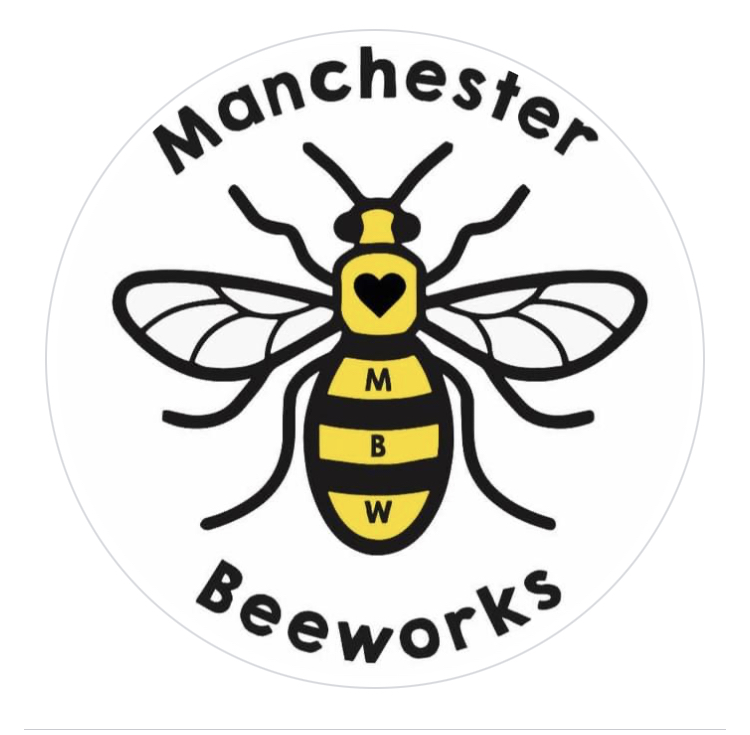The Buzz on Manchester's Honey Bees: A Casual Guide to the Life Cycle and Adventures of UK's Favourite Pollinators
- Manchester Bee Works
- Mar 16
- 4 min read
Honey bees are remarkable creatures, and in the lively city of Manchester, they are vital to our local ecosystem. With their amazing pollination skills and the tasty honey they produce, bees play a crucial role in nature and our food supply. Let’s embark on an engaging journey through the life cycle of a UK honey bee, exploring the amazing stages they go through.
The Beginning: The Queen's Egg
The life cycle of a honey bee begins when a queen bee lays her eggs in the cells of a honeycomb. During peak season, a queen can lay up to 2,000 eggs a day, ensuring the colony thrives. Each egg is uniquely placed in a cell, and the entire process is fascinating.
You might wonder what happens to these eggs. After about three days, the eggs hatch into tiny larvae. This phase is critical for determining the future of each bee. The queen carefully lays fertilized eggs that develop into female worker bees and unfertilized ones that become male drones.
The Larval Stage: The Transformation Begins
After hatching, the larvae are fed a special diet of royal jelly by worker bees. In the first days, all larvae receive royal jelly, but potential queen larvae are given this exclusive diet. This high-energy nourishment is crucial for their growth.
The larvae grow rapidly, shedding their skins multiple times. After about six days, they’re ready for the next big change: pupation. During this stage, they no longer receive food and enter a protective state inside sealed cells. It’s a significant transformation, gearing them up for their new life outside.
The Pupal Stage: Metamorphosis
Honey bees undergo complete metamorphosis, making their development unique among insects. In the pupal stage, which typically lasts a week, the larva experiences rapid changes as it matures into an adult bee.
Inside their sealed cells, they develop wings, legs, and all the necessary body parts to function as adults. Around 12 days after the eggs were laid, the new bees chew through wax to emerge from their cells. This moment marks a significant milestone for the colony.

Becoming an Adult Bee: Roles Within the Colony
Upon emerging, these new honey bees enter a world full of responsibilities. Initially, they focus on house tasks, which include cleaning cells, caring for the queen, and tending to the brood.
As they age, they transition into forager bees. This phase leads them outside the hive to search for nectar, pollen, water, and propolis. With each journey critical for their survival, they significantly impact the hive's health.
The Queen Bee: The Heart of the Colony
The queen bee occupies a unique position in the hive. Typically, there is only one queen, (although two queens is not unheard of) and her primary role is reproduction. She also produces pheromones that help communicate within the hive.
The worker bees may create new queens by feeding select larvae with royal jelly if the hive grows too crowded or the queen ages. This process, called "supersedure", highlights how quickly a colony can adjust and adapt.
The Role of Drones: The Mating Game
Male bees, known as drones, have a different but important purpose. Their main role is to mate with a virgin queen. After they emerge and mature, drones do not engage in foraging or other hive duties. Instead, they wait for the chance to mate.
Unfortunately for them, they die shortly after mating. If a drone does not mate before summer ends, worker bees will push them out of the hive to save resources as winter approaches.
The Foraging Adventures
Once the worker bees transition to foragers, they embark on essential missions. A single worker bee can visit up to 1,500 flowers in one day! Each trip they make to gather nectar and pollen is crucial.
Bees utilise a remarkable communication method known as the “waggle dance” to inform their hive mates about food sources. This unique form of choreography is vital for the hive's success.

The Circle of Life: The End and New Beginnings
As summer fades, the dynamics inside the hive change again. With fewer resources and colder weather on the way, bees instinctively prepare for winter. The colony focuses on conserving food while the worker bees make the most of their final foraging months.
Ultimately, the worker bees will perish, but their legacy will continue through the next generation. The queen lays fewer eggs, and the cycle begins anew in spring. Each year brings fresh challenges, but for the bees, life continues to buzz along.
Final Thoughts
The life cycle of the a honey bee is a captivating journey filled with various roles and challenges. From the caring queen to the tireless foragers, every bee contributes to the colony's health and the environment.
As bee enthusiasts, we must appreciate and protect these amazing creatures. Their stories are woven into our ecosystems, and their honey enriches our lives. So the next time you enjoy a bowl of honey or notice bees buzzing around flowers, take a moment to think about their extraordinary lives.
In Manchester and beyond, honey bees welcome us to their sweet adventures. Let us support their habitats and nurture a world where these essential pollinators can thrive.





Comments